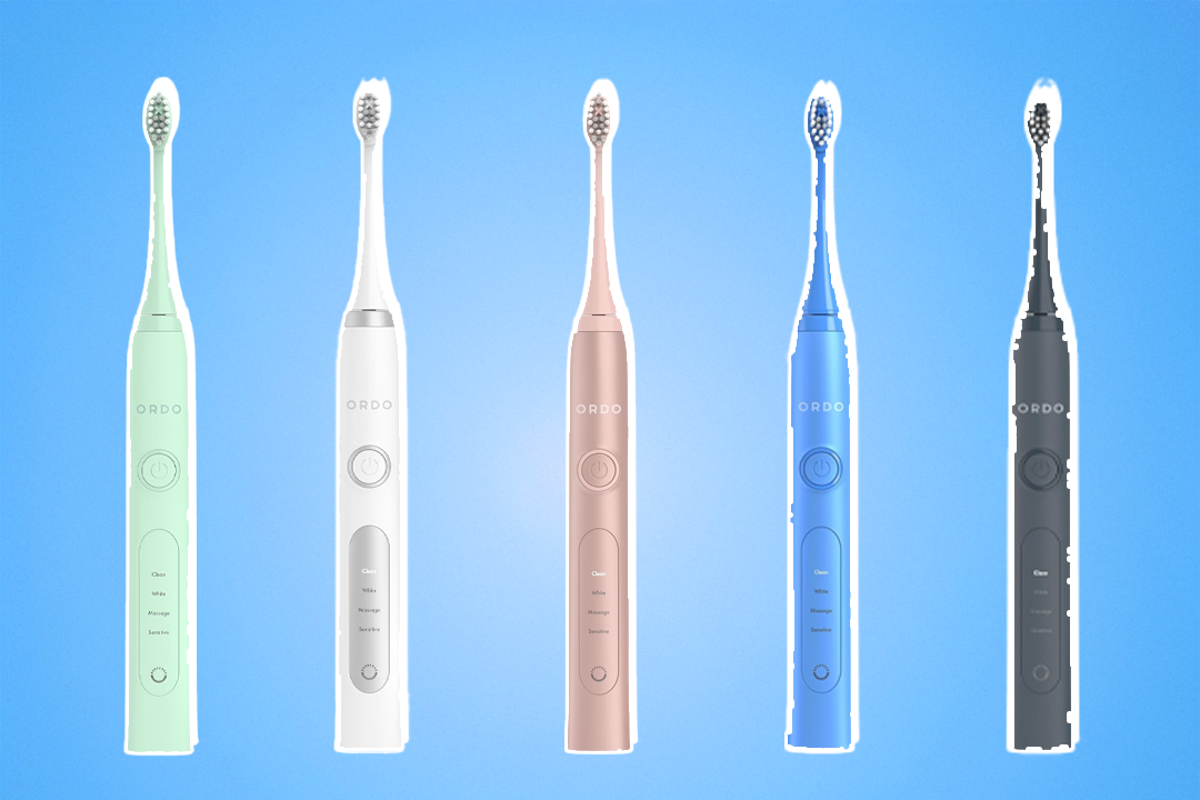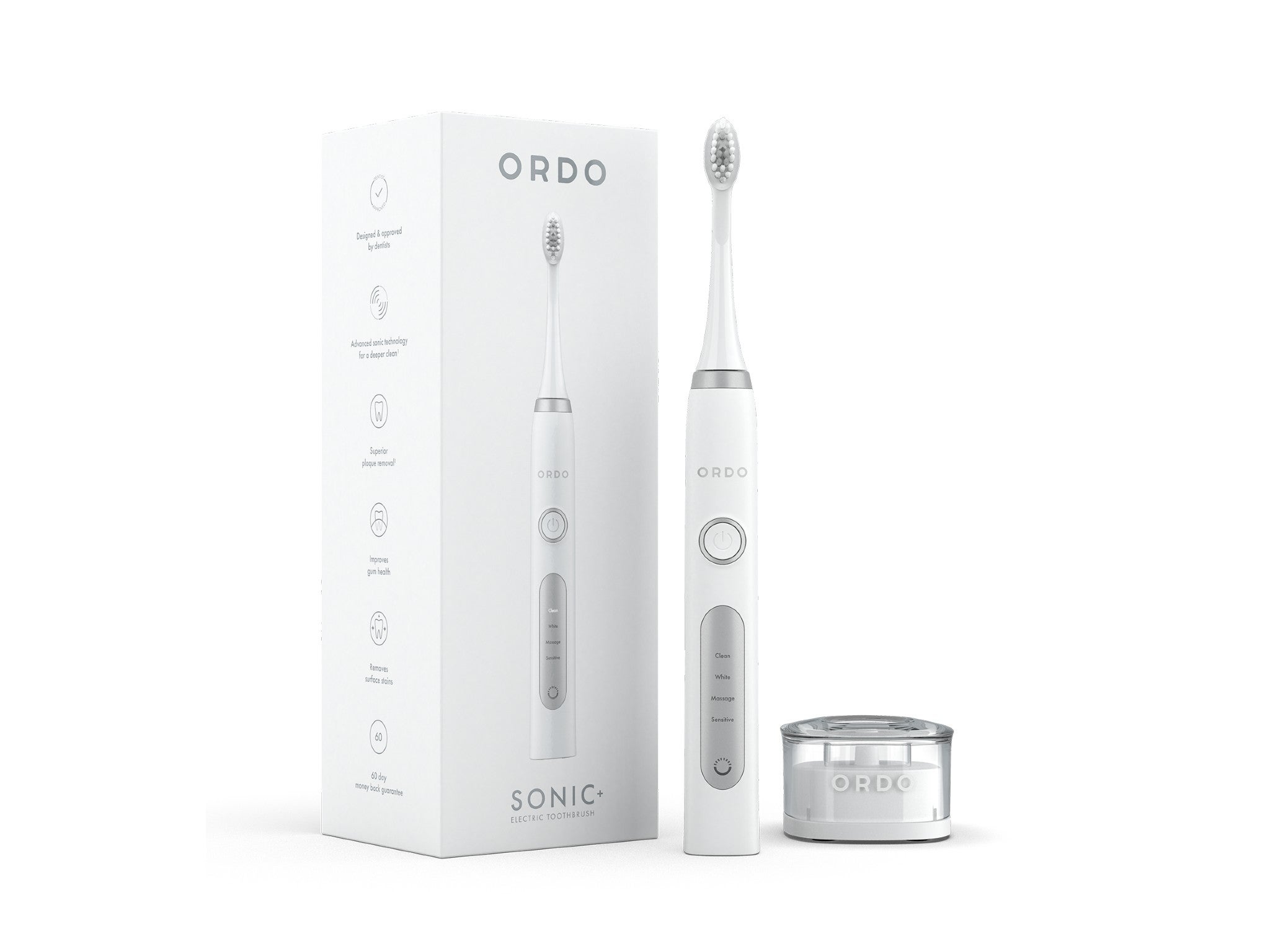
In recent years, electric toothbrushes have become bloated with tech. Many pair with phones over Bluetooth to give you real-time coaching on how you’re brushing and 3D imaging. While these features are nice to have, I’ve found that they often come at a premium, and they really aren’t essential for a thorough clean.
Since 2019, I’ve been testing electric toothbrushes across a range of budgets and styles. Ordo stood out early on as a brand trying to disrupt the usual model. Launching in 2008, Ordo’s electric toothbrushes use sonic technology but ditch the expensive add-ons. I’ve used several of its brushes over the years, including its more recent sonic+ range.
In my experience, Ordo focuses on giving you an actual good clean over gimmicks. It’s a brand I often recommend to friends who want something reliable and effective without spending over the odds. But is it still as good in 2025 as it was in 2008? I’ve put its sonic+ brush to the test.
How I tested
There are two main camps when it comes to electric toothbrushes: sonic and oscillating. The Ordo sonic+ falls into the former, which is the type I’ve used for years. However, I’ve relied on app-connected toothbrushes until now, so I was both curious to see how this more stripped-back alternative would compare over a three-month period. While testing, I considered the following criteria:
- Battery life: The manufacturer claims that the sonic+ has a four-week battery life from full charge. During our three months of testing, I was able to effectively put that to the test. Plus, I looked at how long the device takes to charge.
- Ease of use: I focused on how easy the Ordo sonic+ was to use, something that can make or break a daily routine. I looked for features that support effective brushing without overcomplicating things, such as the built-in two-minute timer and quadrant pacer that guides you through each section of your mouth. I also noted whether the charging setup was simple (the brush comes with a USB charger) and whether it included reminders to replace the brush head, which, in this case, is built into the Ordo subscription model.
- Long-term effects: I looked at how well the Ordo sonic+ maintained that fresh-from-the-dentist feel between brushes, paying close attention to plaque build-up, breath freshness and surface staining, particularly after tea and coffee. I trialled the white mode too, to see if it made any visible difference to brightness over time, while also noting whether the brush caused any sensitivity around the gums or teeth. I also tracked how my mouth felt after meals and first thing in the morning, and used the massage and sensitive modes to see if they offered any long-term comfort or benefit, especially on days when my gums felt tender.
Why you can trust IndyBest reviews
Jon Axworthy has a long history of product reviewing and has been writing for IndyBest since 2017. Oral health is particularly important to him and he’s reviewed plenty of dental tech for The Independent, including Ordo’s sonic + electric toothbrush, Oral-B’s iO 6 electric toothbrush and the Philips sonicare 9900 prestige. So, it’s fair to say that he’s developed a sharp eye for what really matters. With a passion for gear that actually improves daily life, he assesses everything from brush head design to battery life, pressure sensors, and app connectivity, digging into the details so you don’t have to.
12 best electric toothbrushes, tried and tested for a professional clean
Spotlight Oral Care sonic electric toothbrush review: Our verdict for stain removal
Is the Philips sonicare 9900 prestige the ultimate travel companion?
I’ve switched to a plant-based electric toothbrush and will never look back
Ordo sonic+ electric toothbrush

Modes: Clean, white, massage and sensitive
Battery type: Li-ion
Accessories: USB charging base, travel cap
Battery life: Almost four weeks
Returns: Two-year warranty
Travel case: Travel cap included
App connectivity: No
Why we love it
- Incredibly lightweight and ergonomic
- Effective at stain removal over time
Take note
- Lacks a pressure sensor
- Cleaning doesn’t feel as intense as higher-end sonic or oscillating models
Design and ergonomics
The first thing you’ll notice about the Ordo sonic + is that it’s incredibly light, compared with many smart brushes. Obviously, this is because it doesn’t have all the gyroscopes, accelerometers and axis sensors packed into the handle to feed data back to an app.
There’s also no pressure sensor adding weight (more on that later), which means it’s very easy to move around the mouth, with a nicely profiled brush head that covers all the quadrants, including the molars at the back.
The handle has a similar tactile feel to a brush from the Philips Sonicare range and doesn’t have that clumsy characteristic that makes you wonder how you’re going to keep hold of it once it gets wet.
Cleaning
The Ordo sonic + brushes sonically, moving rapidly from side to side over the surface of the teeth, backed up by sonic vibrations that have an agitating effect on the mixture of toothpaste and fluids in the mouth.
The brush head looks similar to Sonicare’s offerings and I liked the W-shaped bristle profile, which let me cover all the exposed surfaces of my teeth. The brush head also has a cross in the middle of the bristles, made from silicone, which helps whiten and polish the teeth as you brushed, and I felt this addition was very effective in getting rid of longer-term stains.
Read more: Philips Sonicare 5100 electric toothbrush review
Although it employs the same technology as brushes in the Sonicare range, there are actually fewer strokes per second – 40,000, compared with Sonicare’s 62,000.
The much initial clean mode (only 31,000 strokes per minute) is much gentler than I was used to, and I ended up switching to the white mode to get that proper teeth-cleaning feeling.
However, even on this mode, the reduced pulsing meant the clean didn’t feel quite as intense and thorough as when using a Sonicare or oscillating product. I had no doubt my teeth were thoroughly cleaned, but there wasn’t that fresh-from-the-hygienist feeling you get when using a brush with a higher-intensity pulse pattern.
Read more: Sanyei ion-sei electric toothbrush review
I didn’t miss checking to see a brushing breakdown either, and I felt pretty confident I’d both achieved good coverage and a total clean without the need for any in-app affirmations.
One feature that was missed was an in-handle sensor that lights up to let you know when you’re applying the right amount of pressure to the teeth – something that you do get from the Oral-B iO range. This was one real-time feature I rely on when brushing.
Battery life
The charging dock is basic and, instead of being plugged into a bathroom shaver socket, it has a USB connector, so you’ll have to take it out of the bathroom and find an electrical socket or laptop to charge the brush.
The brush can be fully charged overnight and can then sit quite happily in your bathroom for almost four weeks, brushing twice daily for two minutes.
Value for money
Like I said at the outset, the Ordo sonic+ is one of the cheapest sonic brushes available, although it doesn’t come with any replacement heads, unlike, for example, the Spotlight Oral Care sonic brush. Four replacement heads cost £18, compared with the Spotlight’s three replacement heads for £25, so you’ll need to factor that into your purchasing decision.
Buy now £40.00, Amazon.co.uk
The verdict: Ordo sonic + electric toothbrush
Many people are put off making the jump to electric brushing because of the cost, and the popularity of the Ordo sonic + clearly has a lot to do with its ability to deliver a sonic clean and excellent value for money. It’s not weighed down with internal technology; instead it offers a fuss-free introduction to electric brushing. If you have gum disease, sensitive teeth, or orthodontics, its reduced repetitions per minute, even on the highest setting, will also appeal, as you’ll certainly feel the benefits of sonic brushing without it feeling too harsh.
Want more dental products? Check out our reviews of the best whitening kits







